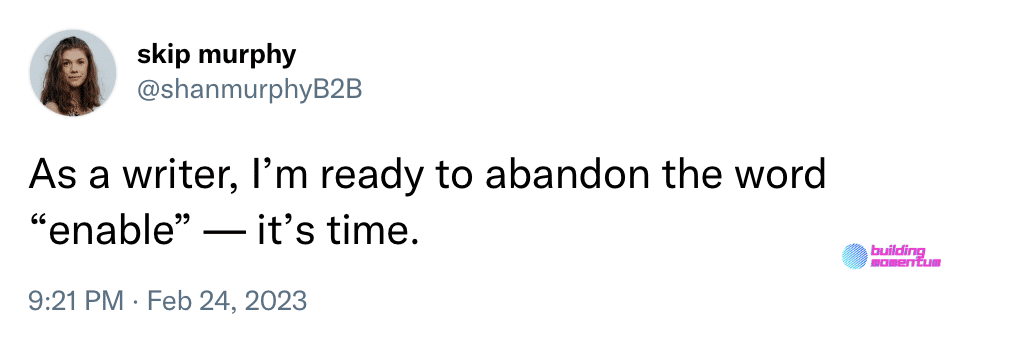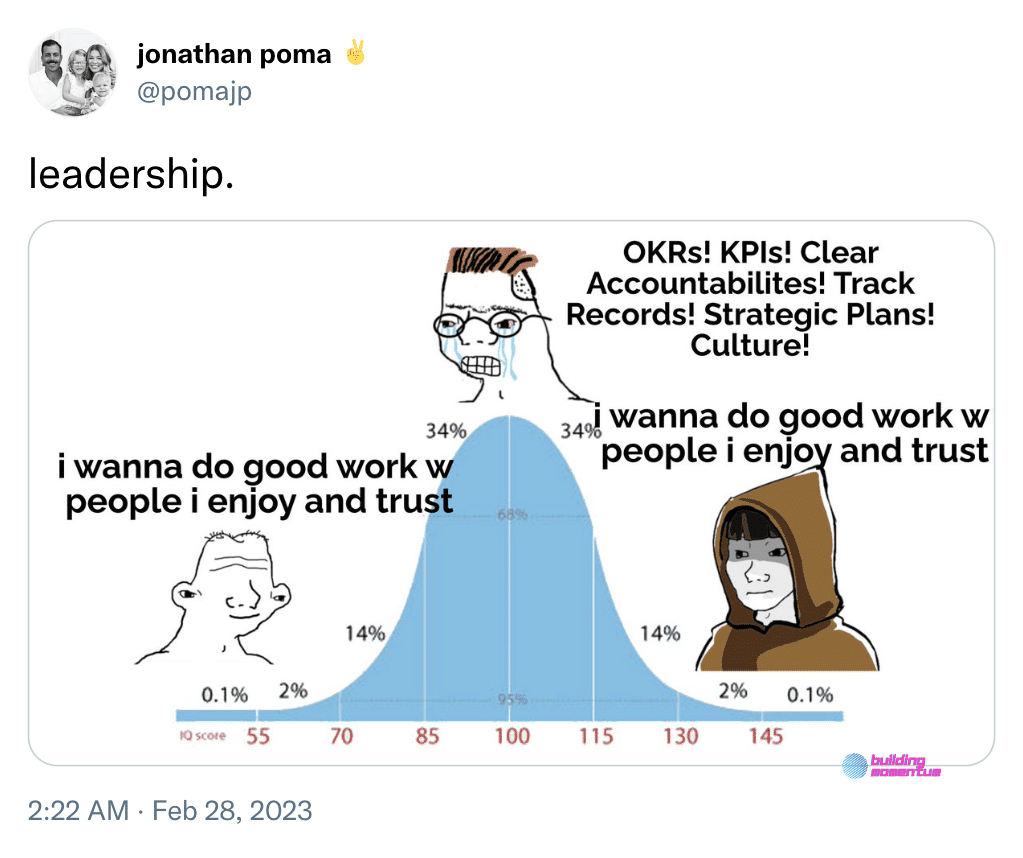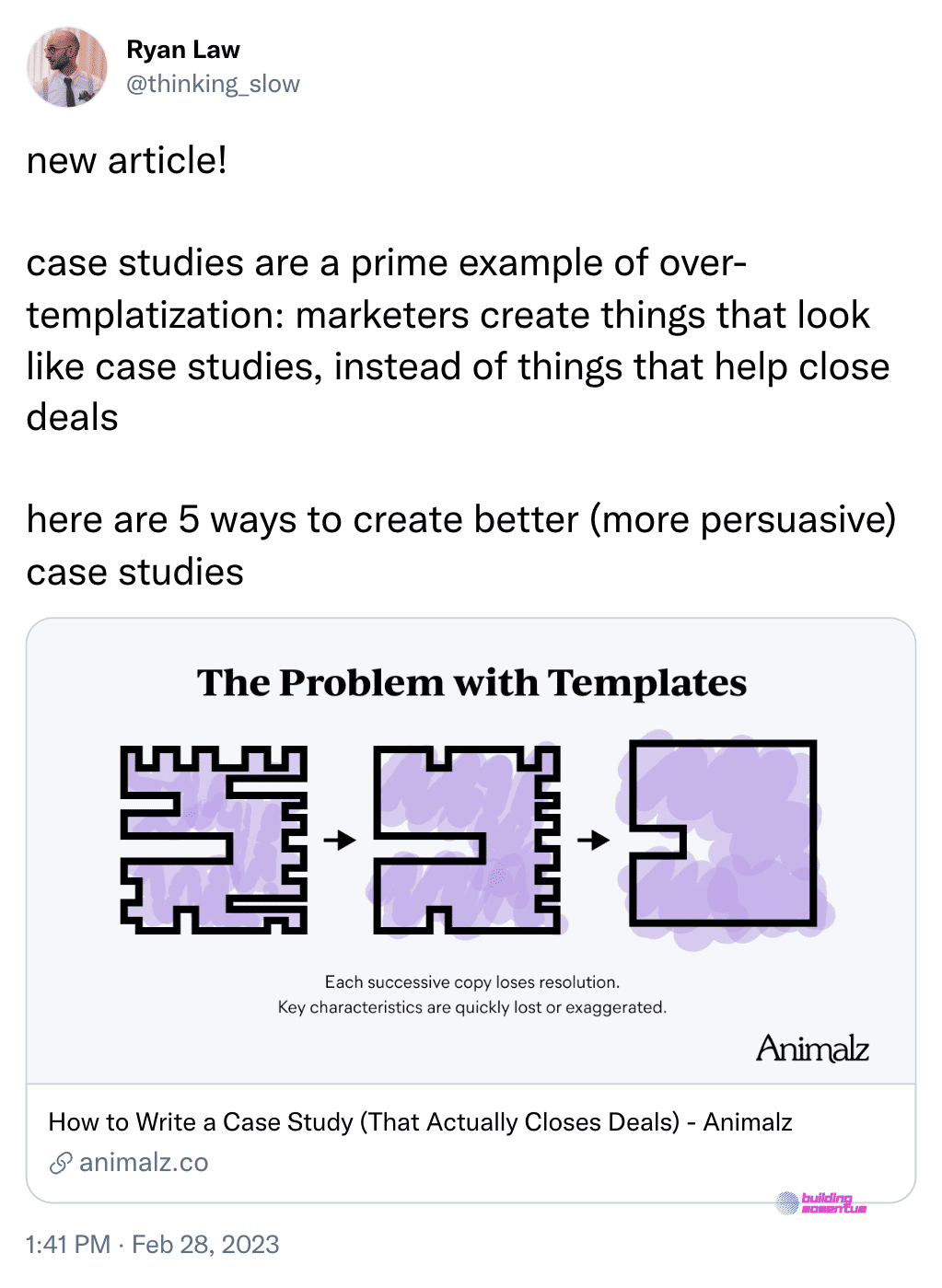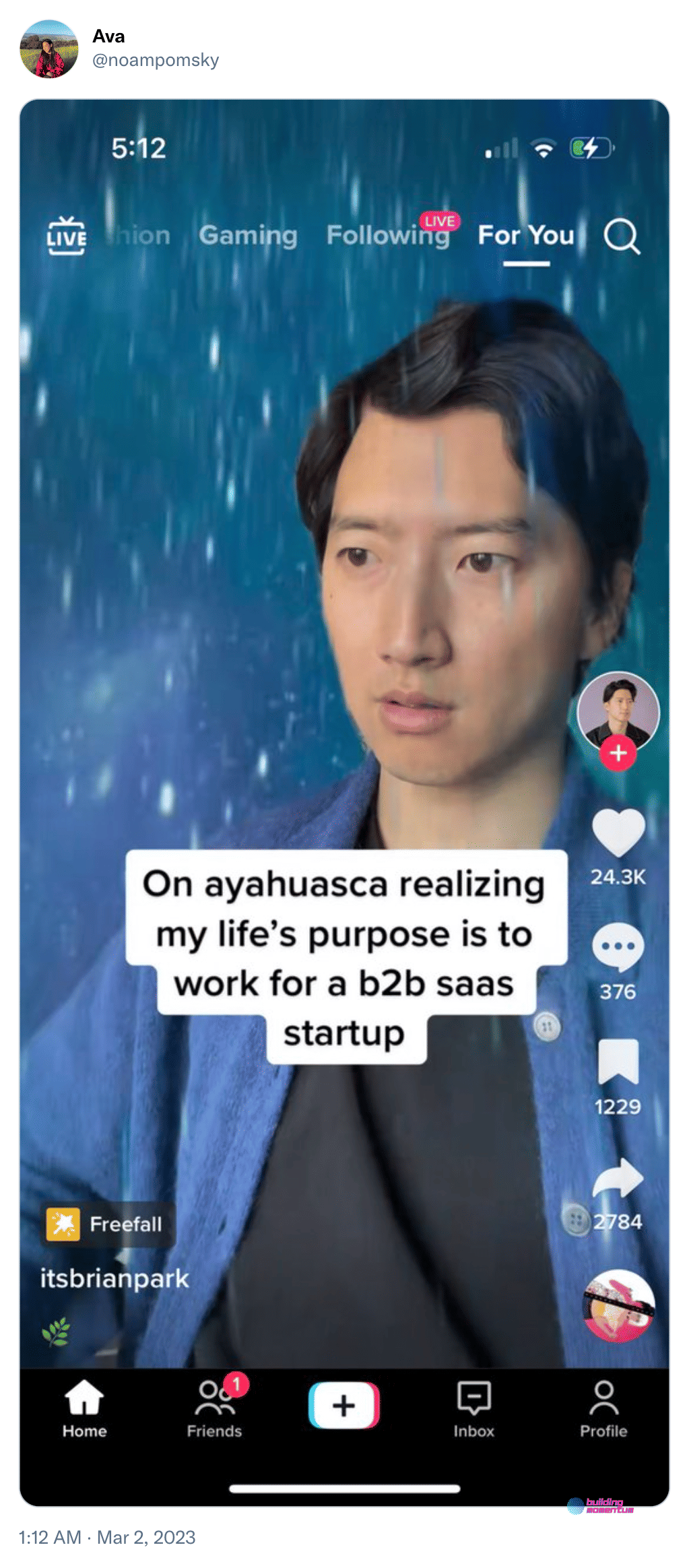Hey there. This is The Overview, a weekly roundup of noteworthy B2B SaaS stuff. You’ll find interesting thoughts, articles, and more from around the internet.
In this post:
Ban this word from the B2B vernacular

100% to this. Let’s put ‘enable’ in the bin, along with ‘best-in-class’, ‘bleeding-edge’, and ‘simply and easily’.
Used once, it can be okay. But used again, and again, and again, as a core part of a value proposition? No.
It quickly loses meaning – and more than that, it places a glass ceiling that your value messaging just can’t break through.
Often, it’s used in a sentence like “Our product enables you to communicate your customers across multiple channels.” And that’s as high as your messaging can go. No value, no benefits, no outcomes.
To get rid of it, just ask what next. Why is that a thing your customers want to do?
It’s so they can “delight customers, wherever they are”… or “increase repeat orders and grow lifetime value”…
Enable greater outcomes from your value messaging, and say thanks but no thanks to enable in your dictionary.
Work

My best, all-round work experience has come from doing good work with people I like and trust. My worst work experience came from somewhere very much focused on KPIs and OKRs.
That’s why one of my personal values is ‘shared adventure’. Ultimately, we’re all on a journey together, each time we reach the top of the mountain, cross the crashing river, or make the wrong choice at the fork in the path together.
There’s a time and a place for strategic plans, reviewing culture, tracking KPIs, and setting OKRs. But definitely optimize for doing good work with people you enjoy and trust.
How to write a case study

I couldn’t say it any better myself – it’s also much more generalisable than just case studies – stop templatizing work!
Back to writing case studies. This article is great, I recommend reading and saving and revisiting when you’re crafting your next case study.
But I wanted to call out one thing in particular:
…most case studies are really post hoc rationalizations that don’t reflect the actual decisions or actions that led to success.
Ah! Yes! So much.
Your case studies need to be based on the reality of your customers and your product. They need to cover the full story – warts and all. Just like product reviews, case studies that are 100% positive and easy are suspicious. Without some hiccups, it’s just less believable.
Your life’s purpose is not this

I think we, as product marketers, are much more likely than others to let the value of our work bleed into our perception of the value of our selves.
So I saw this TikTok and thought it was a good reminder. Seriously: working in B2B SaaS is not your life’s calling, your raison d’etre.
- Explore hobbies
- Work on your self belief
- Discover meaning in multiple areas of life
Have fun!
Thanks for reading! Let me know what you thought – find me on Twitter and LinkedIn.
P.S. If you’ve found value in Building Momentum, could you buy me a coffee? Here’s my tip jar – any support is gratefully appreciated!
P.P.S: If you enjoyed this post, will you share Building Momentum with your network?




